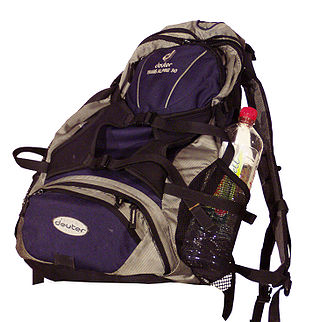
A backpack—also called knapsack, rucksack, pack, booksack, bookbag, haversack or backsack—is, in its simplest frameless form, a fabric sack carried on one's back and secured with two straps that go over the shoulders; but it can have an external or internal frame, and there are bodypacks.

Bicycle messengers are people who work for courier companies carrying and delivering items by bicycle. Bicycle messengers are most often found in the central business districts of metropolitan areas. Courier companies use bike messengers because bicycle travel is less subject to unexpected holdups in city traffic jams, and is not deterred by parking limitations, fees or fines in high-density development that can hinder or prevent delivery by motor vehicle, thereby offering a predictable delivery time.

A pannier is a basket, bag, box, or similar container, carried in pairs either slung over the back of a beast of burden, or attached to the sides of a bicycle or motorcycle. The term derives from a Middle English borrowing of the Old French panier, meaning 'bread basket'.
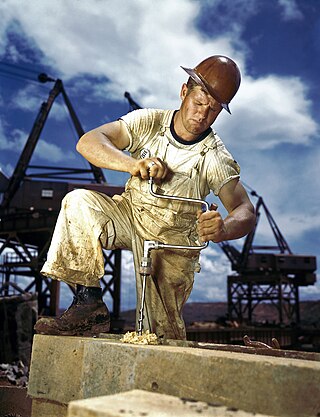
Overalls or bib-and-brace overalls, also called dungarees in British English, are a type of garment usually used as protective clothing when working. The garments are commonly referred to as a "pair of overalls" by analogy with "pair of trousers".

A handbag, commonly known as a purse in North American English, is a handled medium-to-large bag used to carry personal items. It has also been called a pocketbook in parts of the U.S.
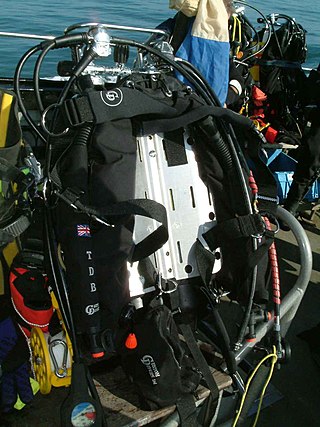
A backplate and wing is a type of scuba harness with an attached buoyancy compensation device (BCD) which establishes neutral buoyancy underwater and positive buoyancy on the surface. Unlike most other BCDs, the backplate and wing is a modular system, in that it consists of separable components. The core components of this system are:

A briefcase is a narrow hard-sided box-shaped bag or case used mainly for carrying papers and equipped with a handle. Lawyers commonly use briefcases to carry briefs to present to a court, hence the name. Businesspeople and other white collar professionals also use briefcases to carry papers, and since the 1980s, electronic devices such as laptop computers and tablet computers. Some briefcases have only a main internal space, while others may have subsections, accordion sections, small pockets, or dividers. Briefcases may be made from leather, vinyl, durable fabric, thin metal, or plastic. Leather, vinyl, or fabric briefcases may have externally-accessible pockets or sleeves in addition to the main storage space. Some briefcases made of fabric may have a shoulder strap. Briefcases typically have a lock to protect the contents. Nowadays, briefcases may have padded internal pouches to protect laptop computers.

A waist bag, fanny pack, belt bag, moon bag, belly bag, or bumbag is a small fabric pouch worn like a belt around the waist by use of a strap above the hips that is secured usually with some sort of buckle. The straps sometimes have tri-glide slides, making them adjustable in order to fit properly. It can be considered as a purse worn around the waist.

.
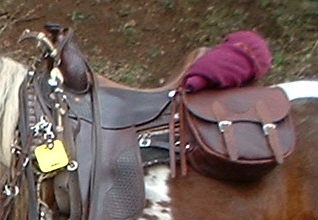
Saddlebags are bags that are attached to saddles.

A satchel is a bag with a strap, traditionally used for carrying books. The strap is often worn so that it diagonally crosses the body, with the bag hanging on the opposite hip, rather than hanging directly down from the shoulder. The back of a satchel extends to form a flap that folds over to cover the top and fastens in the front. Unlike a briefcase, a satchel is soft-sided.
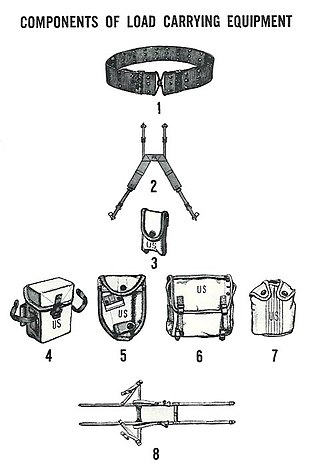
The M-1956 Load-Carrying Equipment (LCE), also known as the Individual Load-Carrying Equipment (ILCE), was developed by the U.S. Army and first issued in the early 1960s. The M-1956 LCE was designed to replace the M-1945 Combat Pack, the M-1923 cartridge belt, the M-1936 pistol belt and the M-1937 BAR magazine belt. The M-1956 LCE was designed to be quickly configured, using no tools, to accommodate various mission and ammunition loads. The M-1956 LCE remained in service through the 1980s and set the standard for future United States military load-carrying equipment.

A haversack, musette bag, or small pack is a bag with a single shoulder strap. Although similar to a backpack, the single shoulder strap differentiates this type from other backpacks. There are exceptions to this general rule.
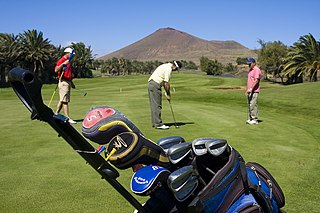
Golf equipment encompasses the various items that are used to play the sport of golf. Types of equipment include the golf ball, golf clubs, and devices that aid in the sport.
Shoulder bag may refer to:
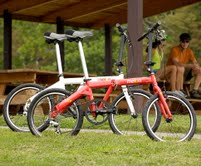
Melon Bicycles was a folding bicycle manufacturer based in Chapel Hill, North Carolina. Many cyclists refer to the company as Melon Bikes, Melon Bicycles, or simply Melon. Melon Bicycles went out of business in 2014.
The 1972 Pattern Webbing was intended to replace the 58 pattern webbing, but never got beyond user trials. It was made from PU-coated nylon to counter the Soviet NBC capability with a general look closer to a load-bearing vest. It was designed to be used in wide variety of environments such as jungles, deserts and was configurable for use, ranging from short-duration jungle patrols to general infantry use.

A bag is a common tool in the form of a non-rigid container, typically made of cloth, leather, paper or plastic. The use of bags predates recorded history, with the earliest bags being lengths of animal skin, cotton, or woven plant fibers, folded up at the edges and secured in that shape with strings of the same material. Bags can be used to carry items such as personal belongings, groceries, and other objects. They comes in various shapes and sizes, often equipped with handles or straps for easier carrying.
The Duluth Pack company is a manufacturer and supplier of Duluth pack style packs. They also produce and sell a range of other products, especially other bags and accessories built in the style of their packs. The company grew out of the shoe repair business started by Camille Poirier in 1870. He patented the #3 Duluth pack in 1882 and later sold the canoe pack business to an outdoor supply store in downtown Duluth, Minnesota, where it is still located. The company is led and owned by Tom Sega.

Ortlieb Sportartikel GmbH is a German manufacturer of outdoor equipment based in Heilsbronn, Germany, which specializes in waterproof bags. Ortlieb is a leading manufacturer of waterproof panniers for bicycles.


















